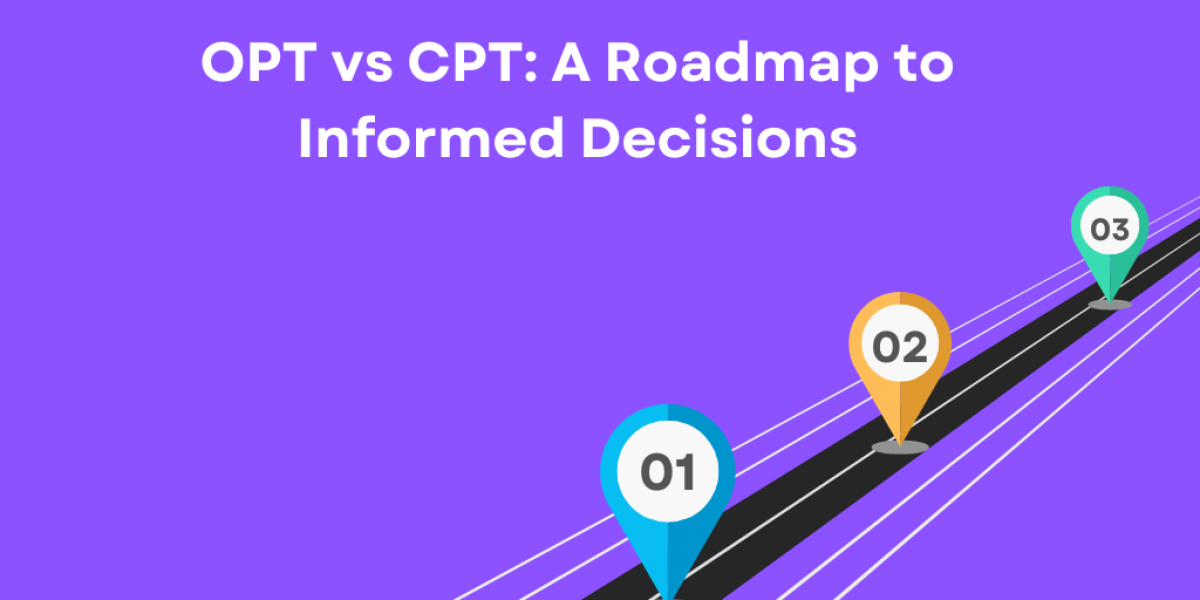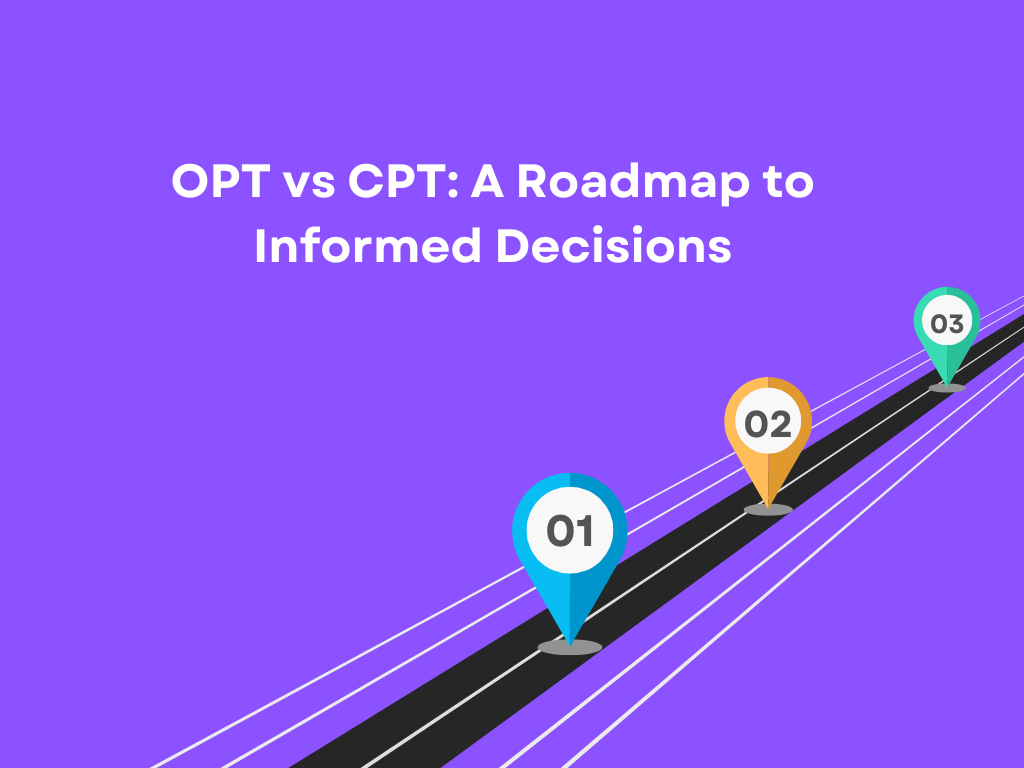Introduction: The Fork in the Road – CPT vs OPT
Standing at the crossroads of OPT and CPT can seem like an enigma to many. Indeed, understanding why informed decisions matter in choosing between OPT or CPT becomes crucial. Careful evaluation and understanding can help clear up the confusion of “CPT vs OPT, OPT vs CPT”. Ultimately, this will guide the students to make decisions that are suitably aligned with their careers and goals.
Understanding the Basics
Firstly, let’s take a journey behind the curtain with an insider’s look into OPT: Optional Practical Training. Here, we discover its high potential as an avenue for international students to acquire practical experience in their chosen field. Intriguingly, OPT is not merely an acronym but a significant stepping stone towards achieving your career goals by gaining real-life work experience in the US after graduation from university.
Moreover, OPT can be used after each level of study. For instance, a student can utilize OPT after graduating from their undergraduate studies in the US and then again after graduation with a master’s degree.
On the other hand, CPT: Curricular Practical Training offers an equally compelling trajectory. To illustrate, CPT is an integral part of a curriculum. It enables students to work full-time even before graduating presenting them with the opportunity to gain employment experience and more easily transition into OPT to continue working once they graduate.
Notably, CPT is designated as either “full-time” or “part-time” and these details will be included on the student’s I-20 and SEVIS records. Specially full-time CPT is designated as working 20 hours or more per week while part-time is anything under 20 hours a week. If a student uses 12 months or more of cumulative CPT, they will not be eligible to use OPT once they graduate.
The Showdown: OPT vs CPT
Now, the stage is set for an enlightening debate comparing OPT and CPT. Upon closer examination of these programs, we can dissect the potential drawbacks of OPT and CPT, offering an unbiased perspective. Who better to narrate this journey than the students themselves? Unquestionably, their real-world experiences with OPT and CPT provide invaluable insights, adding depth to the discussion.
| OPT | CPT | |
| Basic Difference | OPT is typically used after graduation. | CPT is used while studying a program and can’t be used before a program starts or once a student graduates. |
| Authorization | Requires approval from USCIS and students receive an EAD (Employment Authorization Document) card. | CPT is authorized by the university, with CPT details included on a student’s I-20. |
| Duration and Extensions | OPT is initially authorized for 12 months, with the possibility of a 24-month extension for certain STEM-designated programs, resulting in a total of 36 months. | CPT’s duration depends on the student’s course and employment’s role in the curriculum, requiring renewal on a semester or annual basis. |
| Application Process | Students apply to the United States Citizenship and Immigration Services (USCIS) and the process may take around 3-5 months. | Students apply to International Student Services. They need an I-20 form and a CPT authorization from their university and the process typically takes around 10-15 days. |
| Application Fee | Requires a $550 application fee from the Department of Homeland Security, with some universities possibly having an additional fee. | Does not require a processing fee. |
Choosing Your Path: Factors to Mull Over
In the process of crafting your career path, there are several key factors to consider. Predominantly, personal aspirations play a pivotal role in tailoring OPT and CPT to align with your individual goals. Subsequently, the next step involves charting your career course, and understanding how OPT and CPT fit into this grand scheme.
Importantly, most students who have not used OPT on their current study level, being either undergrad or graduate studies, typically ensure not to exceed 12 months of full-time CPT. By doing so, they maintain their eligibility to utilize OPT after graduation, gaining additional work experience in the US. The STEM extension also serves as a crucial factor in choosing your degree of study. Many students diligently ensure their program of study has a CIP code, which designates as STEM-approved, thus allowing the student to apply for the STEM extension in OPT for a total of three years of work in the US.
As you apply for a program, it’s advisable to inquire if the program is STEM-designated and about the program’s CPT policy, as they will vary based on each university and program.
For assistance with program selection, admissions, and overall guidance either for day 1 CPT or for STEM designation, feel free to contact us at info@day1cpt.com. We are here to assist with program selection, the admissions process, and overall guidance through the US university system.
Lorem ipsum dolor sit amet, consectetur adipiscing elit. Ut elit tellus, luctus nec ullamcorper mattis, pulvinar dapibus leo.






